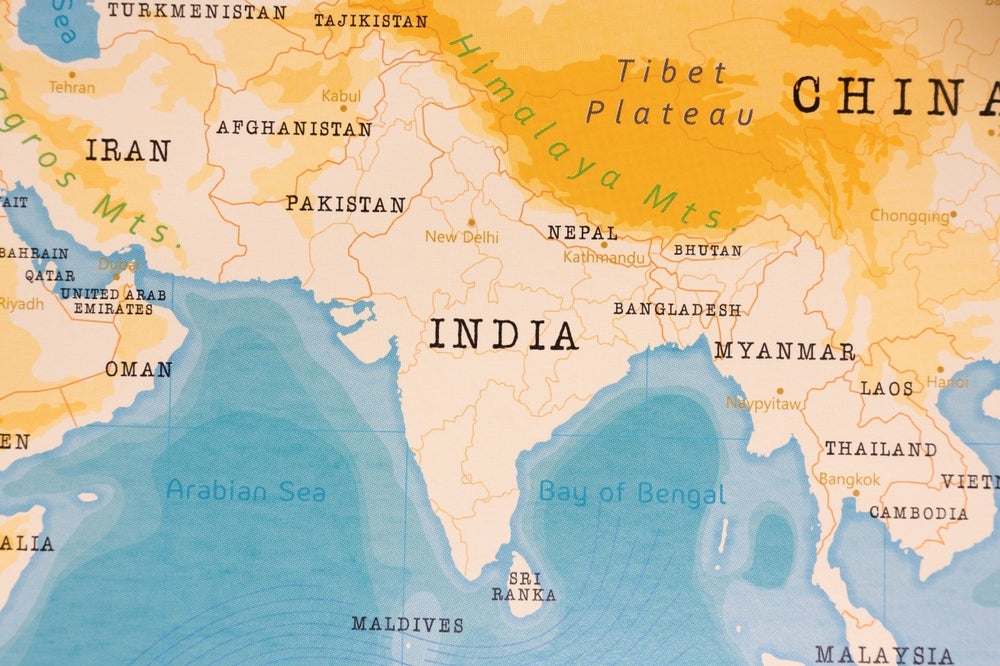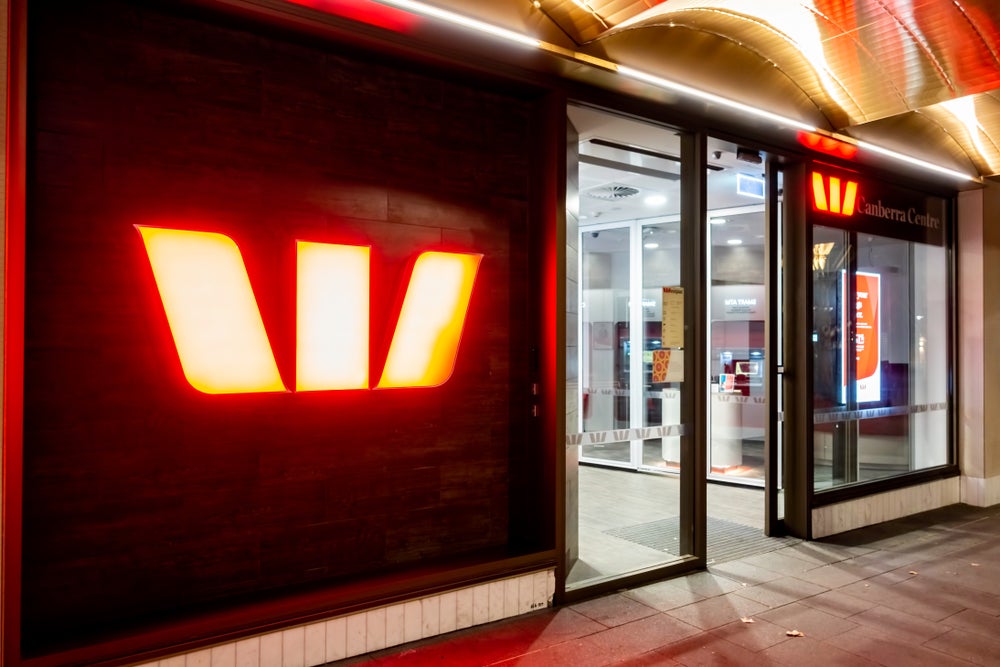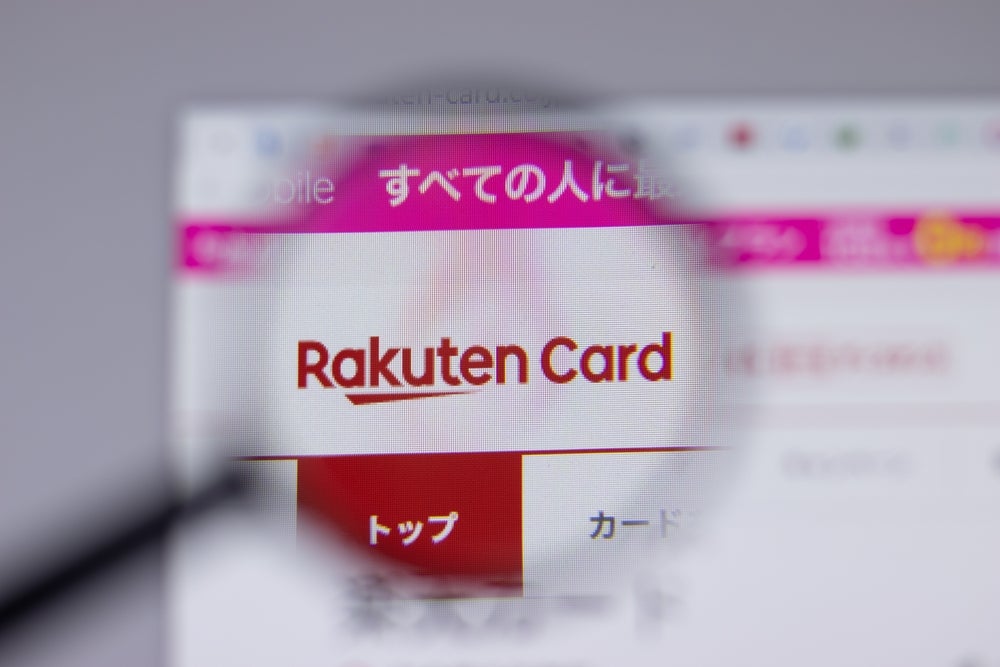Italy still has a cash-dominated economy, but the country’s
cards industry is in growth mode and revolving credit is set to
become a major revenue generator as Italian consumers overcome
their traditional aversion to debt. Victoria
Conroy reports.

Although the vast majority of consumer payments are still made
with cash, Italy has been the setting for some major developments
in Europe’s card industry over the last year. In 2005 cash was used
for 67 percent of transactions. Card payments were the
fastest-growing method: between 2000 and 2005, their percentage of
total non-cash payments increased from 21 percent to 33
percent.
At the same time, buoyed by a strong economy and rising
disposable incomes, Italian consumers were overcoming their
traditional aversion to debt and starting to make more purchases on
revolving credit cards, although debit and charge cards remain the
most popular type of payment cards.
In Italy, fewer than 100 non-cash transactions per inhabitant
are made per year – the number of card transactions per inhabitant
is around 19. The average debit card transaction in Italy is €86
($115), the highest in Europe. (See figure 1).
However, the number of credit cards is growing at a much faster
rate than other payment cards. Currently, Italy has 0.5 credit
cards per inhabitant, compared to the wider European average of 0.8
cards per inhabitant, leaving plenty of room for growth. Among
countries in Europe, Italy had the highest rate of growth in the
use of credit and debit cards over the past few years and forecasts
for 2007 place it among the top performers, alongside the UK and
the Netherlands.
How well do you really know your competitors?
Access the most comprehensive Company Profiles on the market, powered by GlobalData. Save hours of research. Gain competitive edge.

Thank you!
Your download email will arrive shortly
Not ready to buy yet? Download a free sample
We are confident about the unique quality of our Company Profiles. However, we want you to make the most beneficial decision for your business, so we offer a free sample that you can download by submitting the below form
By GlobalDataAccording to the latest figures available from the Italian
banking association (Associazione Bancaria Italiana – ABI), there
were over 14.2 million active credit cards as of December 2005,
compared to 13.3 million at the end of 2003, and over 26.5 million
debit cards, compared to 24.7 million at the end of 2003. (See
figure 2). Italy’s payment infrastructure comprises nearly
37,000 ATMs and 948,000 POS terminals.
At the end of 2000, over 139 million debit card POS transactions
had been made, with the figure rising to 236 million by
mid-2005.
Payment networks
 Created in 1995 by the ABI,
Created in 1995 by the ABI,
the Convenzione per la gestione del marchio bancomat (COGEBAN) is
the organisation responsible for the development of the Bancomat
(ATM) and PagoBancomat POS payment networks. Comprising over 600
member banks, it is responsible for technical standards,
investments in and upgrades to the system, and new product
development such as prepaid or EMV cards. At the end of 2005, there
were 20.8 million PagoBancomat debit cards in force, meaning it
will be one of the largest debit card programmes in the Single Euro
Payments Area (SEPA). Additionally, there are another 5.7 million
non-PagoBancomat debit cards in circulation.
Visa and MasterCard both enjoy a strong presence in Italy.
MasterCard’s Maestro is the dominant debit scheme and accounts for
most pay-now transactions in terms of value. (See figure
3.)
CI spoke to Roberto Tittarelli, MasterCard Europe
general manager for southern Europe, about how Italy’s card market
has evolved over the last decade. “In the past few years we have
been noticing a growth both in credit and debit cards, but the
growth of the credit card has been significantly bigger than debit
cards in terms of new cards issued. This is particularly true for
revolving cards and premium cards. Currently, the penetration of
debit cards versus bank accounts is around 75 percent, while the
penetration of credit cards versus bank accounts is around 40 to 45
percent,” he said.
 “A second significant trend
“A second significant trend
that Master-Card is experiencing, particularly in the last two
years, is the growth of premium cards such as gold, platinum and
other premium cards. In Italy the penetration of total cards in
circulation of this type of product was around 1 percent until a
couple of years ago, and now it is almost reaching 3 percent, and
we expect this segment to grow at market level to 8 percent to 10
percent during the next ten years.”
How are MasterCard and its members encouraging the use of
revolving credit cards? Tittarelli said: “We are focusing on
increasing the usage and activation of credit cards with marketing
campaigns, and we are also focusing our efforts on increasing the
number of premium cards in the total card base. Revolving cards are
taking off in terms of card numbers but not so much in terms of
usage. From our perspective, as well as from the issuing banks,
priority will be given to increasing activation and usage of
existing cards, but we are still a country where charge cards are
predominant in terms of usage compared to revolving cards.”
In 2006, the number of Visa debit cards in circulation grew 10.3
percent to 14 million, while Visa-branded credit cards numbered
around 7 million, a growth of 11.6 percent. The total number of
Visa cards in circulation, including credit, debit and commercial
cards, rose to 22 million in 2006, compared to 18.5 million in
2004. Visa added 2.2 million new cardholders during 2006, a rise of
11 percent compared to 2005. (See figure 4).
 Visa’s efforts to displace
Visa’s efforts to displace
cash in Italy appear to be paying off, as evidenced by its 2006
figures. Gross consumer expenditure on Visa cards in Italy amounted
to €37 billion in 2006 – a 9 percent rise compared to 2005. The
overall consumer expenditure value at the POS was €32 billion, a
rise of 7.6 percent.
Davide Steffanini, general manager of the Visa Europe office in
Italy, said: “The increase in the number of cardholders and in the
consumer expenditure volumes via Visa cards is consistent with the
current trend in our country, where Italians reveal a higher
inclination towards purchases with electronic money, thus showing a
growing level of awareness and confidence in the types of services
that Visa member banks offer. Nevertheless growth trends do not
reflect yet the real potential of this market.”
Prepaid cards are also a strong growth segment for Visa in
Italy. There are now over 4 million Visa prepaid cards in the
country. In the commercial product space, Visa has over 1 million
cards in circulation, a rise of 17 percent compared to 2005.
Visa is also aiming to expand card acceptance in industries that
typically have low penetration, for example in insurance, medical
and professional service industries, and for recurring payments
such as subscriptions, bills and utilities. This is in line with
new compliance requirements on the traceability of payments by
Italian regulators.
How issuers make revenues
 Given the strength of debit
Given the strength of debit
payment in Italy, Italian banks were slow to wake up to the
benefits of offering consumers revolving credit, as this was
traditionally the domain of specialist consumer finance providers.
However, banks are now capitalising on the quality and quantity of
customer information that is provided by offering credit cards and
are now able to more effectively target and promote their cards
based on customer segmentation.
According to statistics from Assofin (the Italian Association
for Consumer Credit and Mortgages) for 2005, Italy’s consumer
credit industry accumulated a total of €47.6 billion in consumer
credit, up 15 percent from 2004. Of this, revolving credit totalled
€7.65 billion, up 23.2 percent over 2004.
POS lending is the main driver of consumer finance in Italy, and
many providers’ ‘pay-later’ cards are typically deferred debit
cards. True revolving credit cards are usually provided as an
additional component to consumer POS loans. Because of this, credit
cards are not viewed as a stand-alone product, but this is set to
change, as many Italian banks are now issuing their own revolving
credit cards, having realised that they can reap significant
revenues from interest and fee income.
However, because of the dominance of consumer finance providers
in offering credit cards, loyalty programmes are offered primarily
by retailers, although some of Italy’s larger banks are enhancing
and expanding their loyalty programmes.
 In Italy, overall
In Italy, overall
profitability of debit cards varies according to how banks offer
the product and to how the cards are used by consumers. In most
cases, debit cards are bundled with other products as part of a
current account package, and most debit card fees, with the
exception of not-on-us ATM withdrawals, are blended into a single
fee. In general, both credit and debit card annual fees are applied
with no transaction fees.
In relation to credit cards, higher levels of charges, along
with the continuing regulatory rumblings over European interchange
fees, have led to merchants encouraging consumers to use cash due
to the higher charges they face. In June 2006, in response to the
European Commission Sector Inquiry on Retail Banking, CartaSi,
Italy’s largest card issuer and acquirer, stated that it had
implemented a new pricing structure under which the annual average
annual fee of newly issued CartaSi cards, as defined by its member
banks, fell from €17.06 in 2004 to €13.16 in 2005.
Italy and SEPA
The future of PagoBancomat in post-SEPA Italy has been the
subject of much discussion over the past year, both in the payment
industry and in political circles. MasterCard’s Maestro is already
co-badged with PagoBancomat, but a number of Italian banks recently
declared their intention to opt for Visa’s debit scheme, V PAY.
Acquirers signed up to V PAY include Setefi, Deutsche Bank Italia,
Banca Antonveneta, Banca Nazionale del Lavoro and CartaSi, although
issuing deals have yet to be announced.
In September 2006, six European cards and ATM schemes, including
PagoBancomat, signed up for the Euro Alliance of Payment Schemes
(EAPS). If the alliance proves to be successful, it will become one
of the major challengers to the debit dominance of Visa and
MasterCard in Europe. The Wiesbaden Declaration of 5 September
outlining the principles of EAPS noted that participation in the
alliance was open to any scheme committed to the SEPA Cards
Framework.
“Schemes can participate in the Euro Alliance of Payment Schemes
as issuers only, acquirers only, POS only, ATM only and any
combination thereof. Cards of all participating issuers will be
accepted by all participating acquiring schemes,” it noted. “The
objective of the Euro Alliance of Payment Schemes is to enable
participating schemes to offer their members a new alternative for
pan-European card payments.”
MasterCard’s Tittarelli declined to comment on the EAPS
development, but said: “We see the Italian market differently from
other European markets – it is already an open one. We don’t have a
third-party model in Italy – a four-party model has always been in
place – so that model by definition is in favour, and favours
greater competition. I expect that one of the major effects
produced by SEPA will be the acceleration of the cheap migration of
debit and credit cards in Italy.”
Card issuers
CartaSi
CartaSi is an interbank company
owned by an Italian banking consortium. It currently has over 7.5
million credit cards in circulation and in 2006 handled over 406
million transactions compared to 375 million in 2005, for a value
of €42.2 billion compared to €38.8 million in 2005. CartaSi issues
payment cards for more than 800 banks including Intesa Sanpaolo,
Findomestic and Bank-Americard. CartaSi is also the largest
acquirer in Italy with a 60 percent market share.
Taken together, the three largest players – CartaSi, Deutsche
Bank Italia and Setefi (owned by Banca Intesa) – have 80 percent of
the market. In 2005, CartaSi expanded into the mobile payment space
by acquiring mobile payment specialist Young Generation.
Intesa Sanpaolo
The January 2007 merger of Banca Intesa and Sanpaolo IMI created
Italy’s largest banking group, with a market capitalisation
exceeding €74 billion, and an average market share of approximately
20 percent in all business areas, including credit and debit cards.
It is aiming to boost its share of the credit card market from 21
percent to 25 percent.
Intesa offers an online debit card, the Maestro-branded Carta
Intesa, which enables cardholders to withdraw cash free of charge
from any Banca Intesa ATM or, at a cost of €2 per transaction, to
withdraw cash from any other bank’s ATMs anywhere in the world. The
card can also be used at merchants that accept PagoBancomat.
Intesa’s main revolving product is Carta Clessidra, which the
bank expects will be the segment with the most significant growth
rates in the future. Intesa is also working on displacing cash by
offering customers the ability to have credits made automatically
to a prepaid card, which, for a one-off charge, will allow them to
use the prepaid card for payments or cash withdrawal.
UniCredito
UniCredito Italiano is the country’s second-largest bank by
assets, and is enjoying strong growth in its consumer finance
operations. In 2005, it reported a 37.4 percent increase in
consumer credit over 2004.
Its specialist consumer finance provider, Clarima Banca, has now
grown to become the second-largest provider of consumer credit in
the country. Clarima has on offer a wide range of credit cards,
including retail, affinity, fuel and bancassurance cards. Another
offering is the Lufthansa Miles & More Gold card, enabling
cardholders to earn air miles on the German Lufthansa airline.
UniCredito Italiano issued an additional 294,000 revolving
credit cards in 2005, boosting spend on its cards in force at both
ATMs and the POS from €271 million in 2004 to €285 million in 2005.
Its credit card market share is estimated to be around 10 percent,
giving it 1.4 million cards. Since December 2006, all of Clarima’s
card products have been EMV-compliant.
Findomestic Banca
Findomestic Banca is part of the Findomestic Group, comprising
consumer finance companies Credial Italia, Credirama and
Findomestic Leasing. Findomestic Banca offers classical credit
through instalment plans and revolving credit.
Its most prominent credit card offering is the Carta Aura, of
which more than 2.9 million cards are in circulation, making it the
third-largest payment card in Italy. It provides Findomestic with a
market share in the revolving loans segment of 40 percent, where
margins are highest (cards generate approximately half of
Findomestic’s interest income while accounting for around 30
percent of new lending).
Findomestic was created in 1984 by French consumer credit giant
Cetelem, and Italian banks Banca CR Firenze and Banco di Sardegna.
Its business model was based on the credit scoring techniques of
Cetelem. In 2006 it granted €5.6 billion new loans to a customer
base of more than 4.3 million, and posted a net profit of €109
million. In March 2007, negotiations between Findomestic and
Cetelem to renew a shareholder agreement broke down, leading to
Cetelem deciding to exercise an option to take an extra 1 percent
stake in Findomestic, giving it a controlling 51 percent stake. It
remains to be seen whether Cetelem will take the entire 100 percent
stake in Findomestic.
Capitalia
Capitalia, with assets as of September 2006 of over €132
billion, is the holding company of the Capitalia Banking Group,
established in 2002. In 2005, Capitalia undertook an organisational
restructure including the merger of the Fineco consumer finance
provider into Capitalia. The range of associated products was
extended with the addition of a Capitalia Gold card aimed at
customers in the medium-high segment. In 2005, Capitalia reported
that credit card sales reached €428 million.
In late 2004, Capitalia launched Carta E, an ethical credit card
that enables cardholders to contribute a share of their purchases
to charities at no extra cost. Carta E was selected by 70 percent
of new card customers, with new issues of the three card types
available exceeding 130,000.
BankAmericard
BankAmericard was Italy’s first bankcard, launched in 1969.
Deutsche Bank’s acquisition of Bank of America’s retail banking
operations in Italy in 1986 allowed it to become the dominant
player in the credit cards industry, until it was overtaken by
CartaSi in the mid-1990s. Until 2003, Bank-Americard was the second
largest card issuer in Italy with more than 3 million cards issued
and a 20 percent market share. As of 2006, BankAmericard had around
2 million cards in issue.







